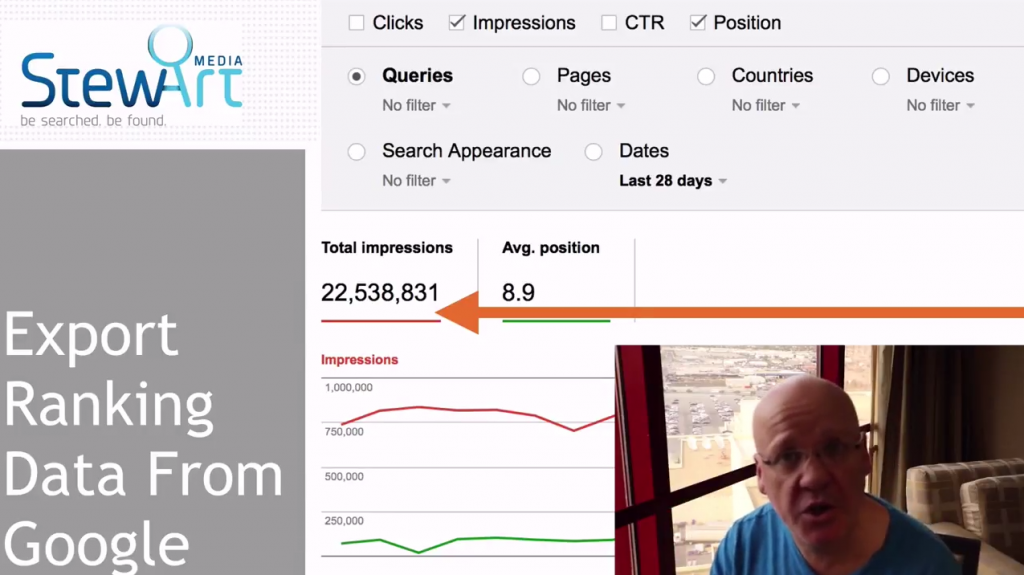Export GSC Data for SEO Measurement
Welcome back Rankers! Coming to you live from Las Vegas this week. I’m over here for Retail Global as we have a stand and a few staff with us this year. I don’t have a view of The Strip this year, but that’s okay as it diminishes the temptation to blow the mortgage on the poker tables. The hotel is lovely so that’s what counts.
Site Migration Dangers
One of the things I’ll be speaking about at this conference is site migration, and how it goes wrong. A major thing that many businesses are getting wrong, and not just with site migration, but even with simple changes to sites, is not putting the proper metrics and measurements in place before you go and do these things. Last week we were at the ProBlogger Event up on the Gold Coast in Queensland, and I was amazed at the amount of people that had truly amazing traffic. One particular lady, hello Imogen, had an extraordinary amount of traffic, just bucket loads, which would honestly rival some large corporate sites. Anyway, her traffic had dropped off by about 100,000 per month, which equated to roughly 20%, and that was just from Google. The problem was she didn’t know what had dropped.
When your traffic drops, it means certain keywords or key phrases have dropped. Part of the thing about site migration that we talk about can be seen in the image below.
We can see 22 million impressions and average position. This is data from Search Analytics in Google Search Console. Before you go and do a site migration, export this data. It will only give you a thousand keywords worth, but if you export this data, it will give you an average ranking position, and the impressions volumes. You can also have a look at certain pages information. You can do multiple exports. As many as you like, all with different parameters. You will be limited to a thousand returns of any metric you choose to select though.
Baseline Metrics
The reason you need to do it, whether you’re doing a site migration or any general major upgrade change, is that you need to know where you are today. You can’t get to where you’re going unless you know where you are. For instance, if you were to push a new site live and all the Google traffic starts to disappear, you won’t know which phrases you’ve dropped for. Unless you have that information on hand before you push your new site live. So by having that information, and if you do something bad to your site that causes a slump in traffic, you can go back and have a look at your spreadsheet.
What I would normally do is export to a Google doc, which is an easy spreadsheet with all your information on hand. This information updates every 90 days, so if you have new phrases or keywords you won’t get all the data you had. Therefore, you need to grab it before you make any major change to your site. That way you can look back and see if you are up or down. If you are down you can look at the pages that were ranking, and have a look at their equivalent pages (which you should do before you push your site live anyway). If you are in a similar position to many businesses where you find yourself trying to figure out where your traffic went once your new site went live, then this would have been a good action to take beforehand. You could reference the spreadsheet and see what’s dropped, and what has risen.
You’ll be surprised at what you see in the end. There’ll be junk phrases in there and stuff you’re not interested in, but you need to take that measurement or temperature check before you go and do any major changes to your site.
If you happen to be in Vegas this week and you are attending the Retail Global conference, then please hit me up. I’ll be at stand 121. Alternatively, come to the site migration session I’ll be doing and we’ll help you out. If I’m not there, speak to the other Jim at stand 121. Hope to see you there. Thanks very much. Bye.

Jim’s been here for a while, you know who he is.



